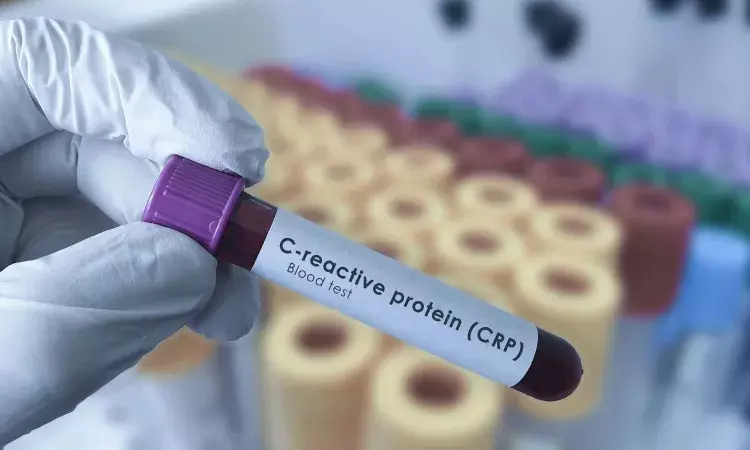- Home
- Medical news & Guidelines
- Anesthesiology
- Cardiology and CTVS
- Critical Care
- Dentistry
- Dermatology
- Diabetes and Endocrinology
- ENT
- Gastroenterology
- Medicine
- Nephrology
- Neurology
- Obstretics-Gynaecology
- Oncology
- Ophthalmology
- Orthopaedics
- Pediatrics-Neonatology
- Psychiatry
- Pulmonology
- Radiology
- Surgery
- Urology
- Laboratory Medicine
- Diet
- Nursing
- Paramedical
- Physiotherapy
- Health news
- Fact Check
- Bone Health Fact Check
- Brain Health Fact Check
- Cancer Related Fact Check
- Child Care Fact Check
- Dental and oral health fact check
- Diabetes and metabolic health fact check
- Diet and Nutrition Fact Check
- Eye and ENT Care Fact Check
- Fitness fact check
- Gut health fact check
- Heart health fact check
- Kidney health fact check
- Medical education fact check
- Men's health fact check
- Respiratory fact check
- Skin and hair care fact check
- Vaccine and Immunization fact check
- Women's health fact check
- AYUSH
- State News
- Andaman and Nicobar Islands
- Andhra Pradesh
- Arunachal Pradesh
- Assam
- Bihar
- Chandigarh
- Chattisgarh
- Dadra and Nagar Haveli
- Daman and Diu
- Delhi
- Goa
- Gujarat
- Haryana
- Himachal Pradesh
- Jammu & Kashmir
- Jharkhand
- Karnataka
- Kerala
- Ladakh
- Lakshadweep
- Madhya Pradesh
- Maharashtra
- Manipur
- Meghalaya
- Mizoram
- Nagaland
- Odisha
- Puducherry
- Punjab
- Rajasthan
- Sikkim
- Tamil Nadu
- Telangana
- Tripura
- Uttar Pradesh
- Uttrakhand
- West Bengal
- Medical Education
- Industry
High levels of hs-CRP Linked to NAFLD in Non-Obese Individuals, finds study

A recent study highlighted a significant link between elevated levels of hypersensitive C-reactive protein (hs-CRP) and the risk of developing non-alcoholic fatty liver disease (NAFLD) in non-obese individuals. With both NAFLD and obesity on the rise worldwide, NAFLD has become one of the most prevalent chronic diseases throughout the globe, often accompanied by elevated hs-CRP levels. Given that NAFLD can progress to more severe liver diseases, the findings published in the European Journal of Medical Research have valuable implications for early detection and preventive strategies, particularly in non-obese populations where the risk may often be underestimated.
The study analyzed data from 6,558 individuals who underwent physical exams between March and November 2017 to investigate the correlation between serum hs-CRP levels and NAFLD in non-obese people. Using multivariate logistic regression, the research assessed risk factors associated with NAFLD across participants aged 20 to 94 years, including 4,240 males and 2,318 females. Out of the total participants, 1,396 individuals were diagnosed with NAFLD by marking a prevalence rate of 21.3%. The data showed a stark difference in prevalence between genders where 24.9% of men were affected when compared to 14.7% of women. Statistical analysis confirmed a higher prevalence of NAFLD among males (χ² = 93.748, P < 0.001).
With further examination, the study revealed that several physiological factors were higher in NAFLD patients than in the control group. These factors included hs-CRP, age, waist circumference (WC), body mass index (BMI), systolic blood pressure, and diastolic blood pressure. Logistic regression analysis established that hs-CRP remains an independent risk factor for NAFLD, even when adjusted for other relevant variables. These results suggest that hs-CRP levels could serve as a valuable indicator of NAFLD risk in non-obese individuals which provides a clinical tool to improve risk prediction and screening in populations that may otherwise go undiagnosed.
These findings suggest a positive association between NAFLD prevalence and increasing hs-CRP levels in both men and women, irrespective of obesity. The elevated levels of hs-CRP observed in NAFLD patients reflect underlying inflammation, which is believed to play a role in the development and progression of the disease. This inflammation marker could be instrumental in identifying high-risk individuals who lack traditional risk factors such as obesity. Overall, the study emphasizes the need for healthcare practitioners to consider hs-CRP levels when assessing NAFLD risk, particularly in individuals who do not exhibit typical obesity-related symptoms.
Source:
Xia, G., Xu, Y., Zhang, C., Li, M., Li, H., & Chen, C. (2024). High levels of serum hypersensitive C-reactive protein are associated with non-alcoholic fatty liver disease in non-obese people: a cross-sectional study. In European Journal of Medical Research (Vol. 29, Issue 1). Springer Science and Business Media LLC. https://doi.org/10.1186/s40001-024-02065-2
Neuroscience Masters graduate
Jacinthlyn Sylvia, a Neuroscience Master's graduate from Chennai has worked extensively in deciphering the neurobiology of cognition and motor control in aging. She also has spread-out exposure to Neurosurgery from her Bachelor’s. She is currently involved in active Neuro-Oncology research. She is an upcoming neuroscientist with a fiery passion for writing. Her news cover at Medical Dialogues feature recent discoveries and updates from the healthcare and biomedical research fields. She can be reached at editorial@medicaldialogues.in
Dr Kamal Kant Kohli-MBBS, DTCD- a chest specialist with more than 30 years of practice and a flair for writing clinical articles, Dr Kamal Kant Kohli joined Medical Dialogues as a Chief Editor of Medical News. Besides writing articles, as an editor, he proofreads and verifies all the medical content published on Medical Dialogues including those coming from journals, studies,medical conferences,guidelines etc. Email: drkohli@medicaldialogues.in. Contact no. 011-43720751


